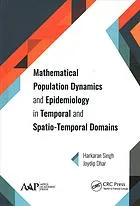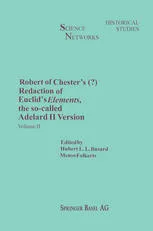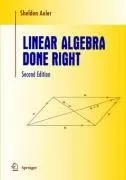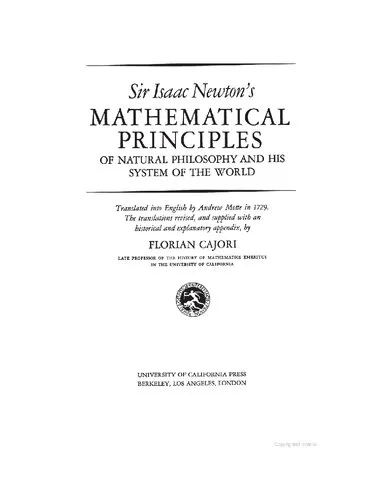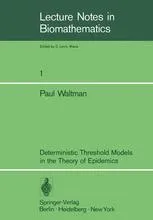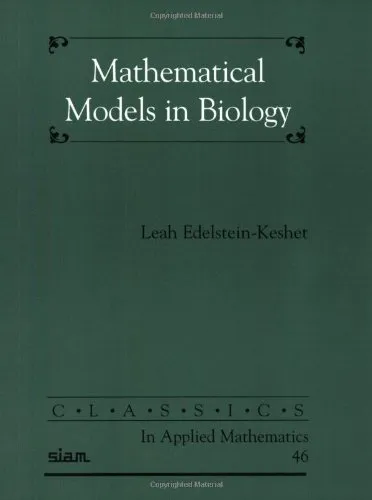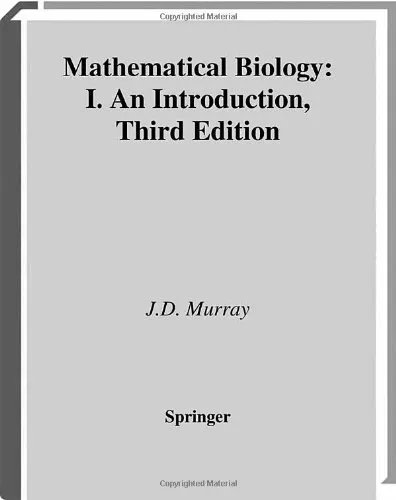Mathematical population dynamics and epidemiology in temporal and spatio-temporal domains
4.0
بر اساس نظر کاربران

شما میتونید سوالاتتون در باره کتاب رو از هوش مصنوعیش بعد از ورود بپرسید
هر دانلود یا پرسش از هوش مصنوعی 2 امتیاز لازم دارد، برای بدست آوردن امتیاز رایگان، به صفحه ی راهنمای امتیازات سر بزنید و یک سری کار ارزشمند انجام بدینکتاب های مرتبط:
معرفی کتاب "Mathematical Population Dynamics and Epidemiology in Temporal and Spatio-Temporal Domains"
کتاب "Mathematical Population Dynamics and Epidemiology in Temporal and Spatio-Temporal Domains" یکی از منابع پیشرفته و جامع در زمینه تحلیل ریاضیاتی دینامیک جمعیت و همهگیرشناسی میباشد. این اثر برجسته با رویکردی ترکیبی، نه تنها مدلهای متمرکز در حوزه زمان (temporal)، بلکه مفاهیم و مدلهای پیچیدهتر در حوزه زمان-مکان (spatio-temporal) را مورد بررسی قرار میدهد. در ادامه، خلاصهای دقیق، نکات کلیدی، یادداشتهایی از بخشهای معروف کتاب و اهمیت آن شرح داده میشود.
خلاصه کتاب
این کتاب تمرکز ویژهای به روشهای تحلیل پیشرفته و مدلسازی دینامیکهای زیستی دارد که از آنها برای درک بهتر جمعیتهای زیستی و روندهای همهگیریشناسی استفاده میشود. نویسندگان کتاب تلاش کردهاند تا مفاهیم پیچیده ریاضی، مانند معادلات دیفرانسیل، مدلسازی غیرخطی و تحلیلهای آماری، را برای مخاطبان پژوهشی و حرفهای قابل درک نمایند.
در فصلهای ابتدایی، اصول اولیه مدلسازی "Population Dynamics" به همراه بررسی مدلهای کلاسیکی مانند "Logistic Growth Model" و "Predator-Prey Models" تشریح میشوند. سپس به موضوعات پیشرفتهای مانند "Age-Structured Models"، "Stochastic Models" و "Metapopulation Dynamics" پرداخته میشود. بخش دیگر کتاب عمدتاً به مفاهیم مرتبط با Epidemiology تخصیص یافته است، جایی که مدلهای SEIR، SIR و SIS تبیین میشوند. مدلهای "Spatio-Temporal" در بخشهای پایانی کتاب بررسی میشوند که بیشتر مناسب مسائل پیچیده مانند گسترش بیماریها در فضاهای ناهمگن و شبکههای پیچیده است.
نکات کلیدی
- فهم پایهای از مفاهیم Population Dynamics
- مدلسازی همهگیریها با SEIR، SIR، و SIS Models
- کاربرد معادلات دیفرانسیل و معادلات با مشتقات جزیی
- تحلیل دادههای spatio-temporal و استفاده در علوم زیستی
- بهکارگیری ابزارهای ریاضی در پیشبینی و کنترل بیماریهای واگیر
نقلقولهای معروف از کتاب
Understanding biological systems requires a delicate balance between theoretical rigor and empirical relevance.
Models are not merely mathematical structures; they are a language for capturing the complexities of living systems.
چرا این کتاب اهمیت دارد؟
در جهانی که اپیدمیها و مسائل مرتبط با دینامیک جمعیت تأثیرات عمیقی بر جوامع انسانی دارند، اهمیت بهرهگیری از علم ریاضی در این حوزهها بیش از پیش افزایش یافته است. این کتاب با فراهم کردن ابزارهای نظری و عملی برای تحلیل، پیشبینی، و مدیریت روندهای زیستی و اپیدمیک، به پژوهشگران زیستشناسی، اپیدمولوژیستها و دانشمندان علم داده کمک شایانی میکند. همچنین پوشش دقیق مفاهیمی مانند Stochasticity، همبستگیهای مکانی و زمانی و تحلیلهای پیشرفته آماری، آن را به منبعی بیمانند در این حوزه تبدیل کرده است.
خواندن این کتاب برای افرادی که علاقهمند به علوم داده، ریاضیات کاربردی و بیوانفورماتیک هستند، به شدت توصیه میشود. ترکیب دانش تئوری و موارد کاربردی در کتاب، آن را نه تنها به یک منبع آکادمیک، بلکه به یک راهنمای عملی ارزشمند برای مقابله با چالشهای نوین علوم زیستی تبدیل کرده است.
Introduction to 'Mathematical Population Dynamics and Epidemiology in Temporal and Spatio-Temporal Domains'
Population dynamics and epidemiology are two key areas where mathematics plays a transformative role in understanding and predicting real-world phenomena. 'Mathematical Population Dynamics and Epidemiology in Temporal and Spatio-Temporal Domains' delves deeply into this fascinating intersection, providing readers with insights that merge biological, epidemiological, and mathematical principles into a single cohesive study. This book not only bridges the gap between theoretical and applied sciences but also serves as an essential guide for researchers, students, and professionals who are interested in the mathematical modeling of complex systems.
In an era where global challenges such as pandemics, ecological collapse, and population density shifts are becoming more frequent and impactful, this book serves a critical purpose. By exploring mathematical frameworks tied to temporal and spatio-temporal dynamics, it becomes a vital resource for addressing pressing concerns from disease outbreak dynamics to the persistence or extinction of species in ecological systems. This text spans a broad spectrum, accommodating varying levels of expertise and providing tools for readers to understand fundamental principles and apply advanced models to real-world problems.
Summary of the Book
This book is structured to guide readers through a systematic exploration of population dynamics and epidemiology using rigorous mathematical models. It begins with an introduction to the fundamental concepts of population modeling, followed by an analysis of temporal changes in populations, including growth, decay, and stability. From there, the discussion transitions into spatio-temporal dynamics, exploring phenomena such as migration patterns, diffusion processes, and the spread of infectious diseases across geographical regions.
The integration of partial differential equations, reaction-diffusion models, and network-based techniques forms the core modeling tools presented in this book. Readers will also find a strong emphasis on parameter estimation, sensitivity analysis, and numerical simulations that enhance their ability to work with real-world data. The latter sections provide case studies that focus on public health challenges such as malaria outbreaks, the spread of invasive species, and the impact of vaccination strategies in controlling diseases. These examples ground theoretical developments into practical applications, making the book highly relevant for applied mathematicians and epidemiologists alike.
Key Takeaways
- A deep understanding of temporal and spatio-temporal concepts in population modeling and disease study.
- The ability to develop and analyze mathematical models for a variety of real-world scenarios.
- A detailed exploration of how mathematical theory aligns with real-world applications in epidemiology.
- Evidence-based insights into decision-making for public health and conservation strategies.
- Enhanced computational modeling skills, particularly in solving differential equations and network-based simulations.
Famous Quotes from the Book
"Mathematics transforms countless individual interactions into broad trends, enabling us to foresee the chaos hidden within the order."
"Epidemics are not bound by borders, just as mathematical models are not confined to the realm of theory. Together, they create a bridge to understanding."
"The survival of species or the eradication of a disease—they both pivot on the balance of quantitative insights and human action."
Why This Book Matters
'Mathematical Population Dynamics and Epidemiology in Temporal and Spatio-Temporal Domains' is more than just a technical exposition—it is a timely text addressing the complexities of our interconnected world. As the shift from isolated populations to global communities intensifies, understanding spatial and temporal dynamics is no longer optional but critical. This book provides the tools needed for real-time prediction and control of phenomena that affect lives at every level of society.
Furthermore, the interdisciplinary approach ensures that the book has universal relevance. Whether you're a mathematician delving into biological applications, an epidemiologist relying on quantitative support for disease studies, or a policymaker strategizing for public health, this book provides vital knowledge and actionable frameworks for addressing today's challenges. It contributes deeply to the growing collaboration between applied science and society, establishing itself as a cornerstone text for understanding and solving population and epidemic-related problems.
دانلود رایگان مستقیم
شما میتونید سوالاتتون در باره کتاب رو از هوش مصنوعیش بعد از ورود بپرسید
دسترسی به کتابها از طریق پلتفرمهای قانونی و کتابخانههای عمومی نه تنها از حقوق نویسندگان و ناشران حمایت میکند، بلکه به پایداری فرهنگ کتابخوانی نیز کمک میرساند. پیش از دانلود، لحظهای به بررسی این گزینهها فکر کنید.
این کتاب رو در پلتفرم های دیگه ببینید
WorldCat به شما کمک میکنه تا کتاب ها رو در کتابخانه های سراسر دنیا پیدا کنید
امتیازها، نظرات تخصصی و صحبت ها درباره کتاب را در Goodreads ببینید
کتابهای کمیاب یا دست دوم را در AbeBooks پیدا کنید و بخرید
1368
بازدید4.0
امتیاز0
نظر98%
رضایتنظرات:
4.0
بر اساس 0 نظر کاربران
Questions & Answers
Ask questions about this book or help others by answering
No questions yet. Be the first to ask!
